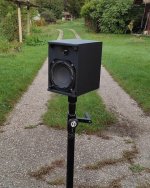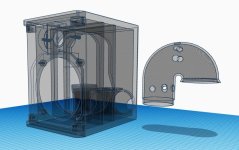@zeltegiest, did you define your SPL/bandwidth requirements, in-room or 2/4π? I’d start there when designing.
I’m curious if this is a path worth pursuing or fundamentally mismatched.
Appreciate any insight or real-world experience anyone can share—thanks!
It seems it doesn't bother Ocean Way to use Dayton subwoofers in HE loudspeaker, so...
https://oceanwayaudio.com/hr3-5/
Last edited:
Yes.
I think they use the HO version of drivers and it give strange port diameter and range when simulating it.
That said i never heard one of Ocean Way's loudspeakers and wasn't thrilled by outcome of Dr Dre's works using the largest Ocean Way system either (the HR-1 used in the 'Dre's room' with the big SSL at Ocean way: no stereo, sound 'huge' but almost mono to me).
It was just an example of commercial unit using this kind of driver mix.
I think they use the HO version of drivers and it give strange port diameter and range when simulating it.
That said i never heard one of Ocean Way's loudspeakers and wasn't thrilled by outcome of Dr Dre's works using the largest Ocean Way system either (the HR-1 used in the 'Dre's room' with the big SSL at Ocean way: no stereo, sound 'huge' but almost mono to me).
It was just an example of commercial unit using this kind of driver mix.
closer to traditional midwoofer then a pro midrange.
What defines a pro driver in my book is power handling (VC diameter, cooling system) and resilience/durability (tougher surrounds, coated membranes, ...). They're less defined by TSP imo, because you can find drivers for pretty much any application (subwoofers, woofers, midwoofers, pure mids, tweeter, supertweeter) in both HiFi and PA.


